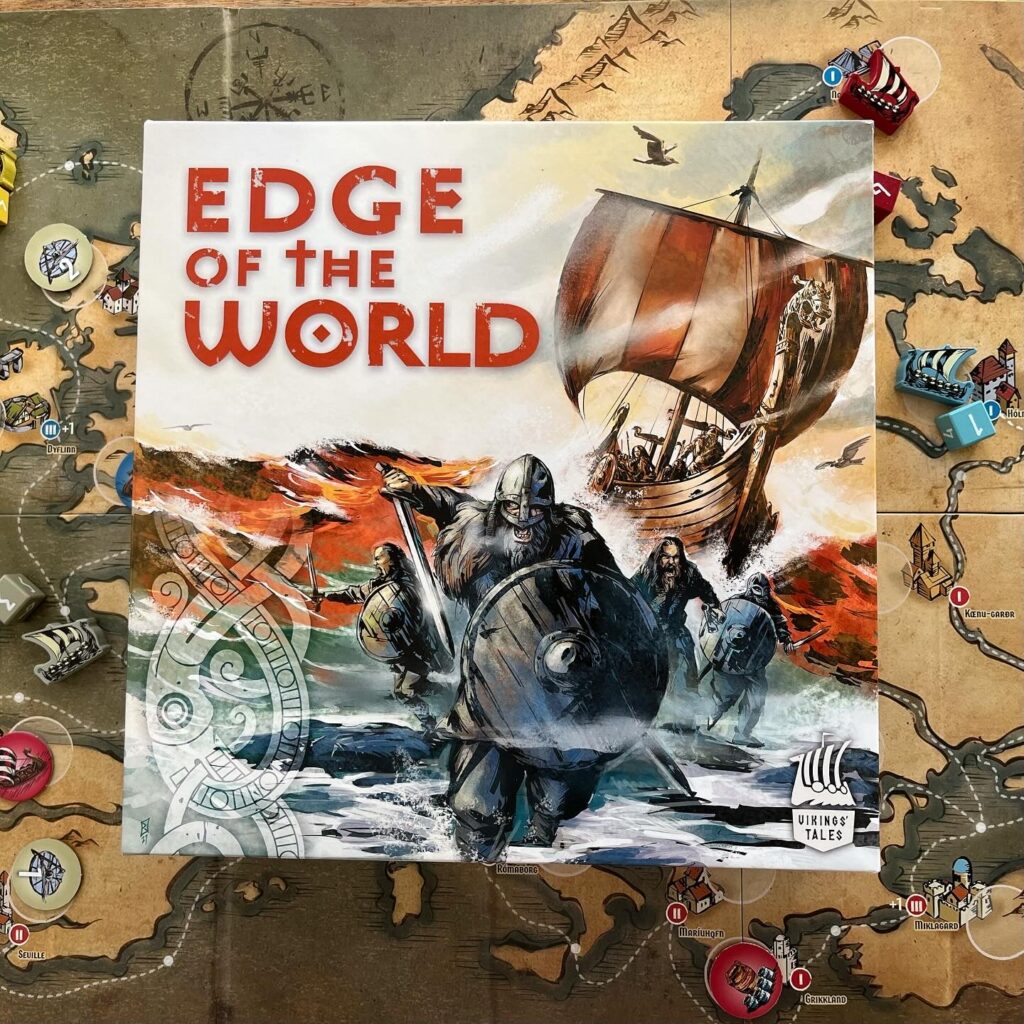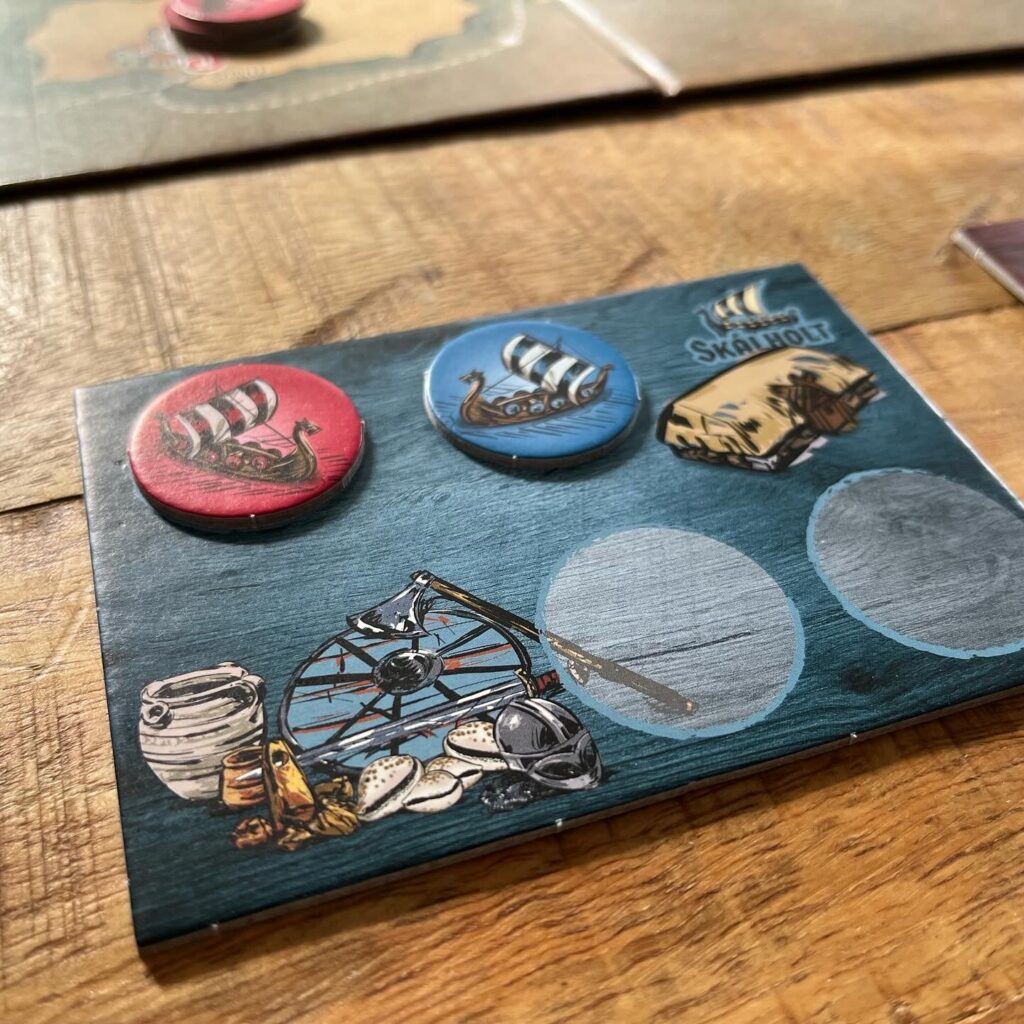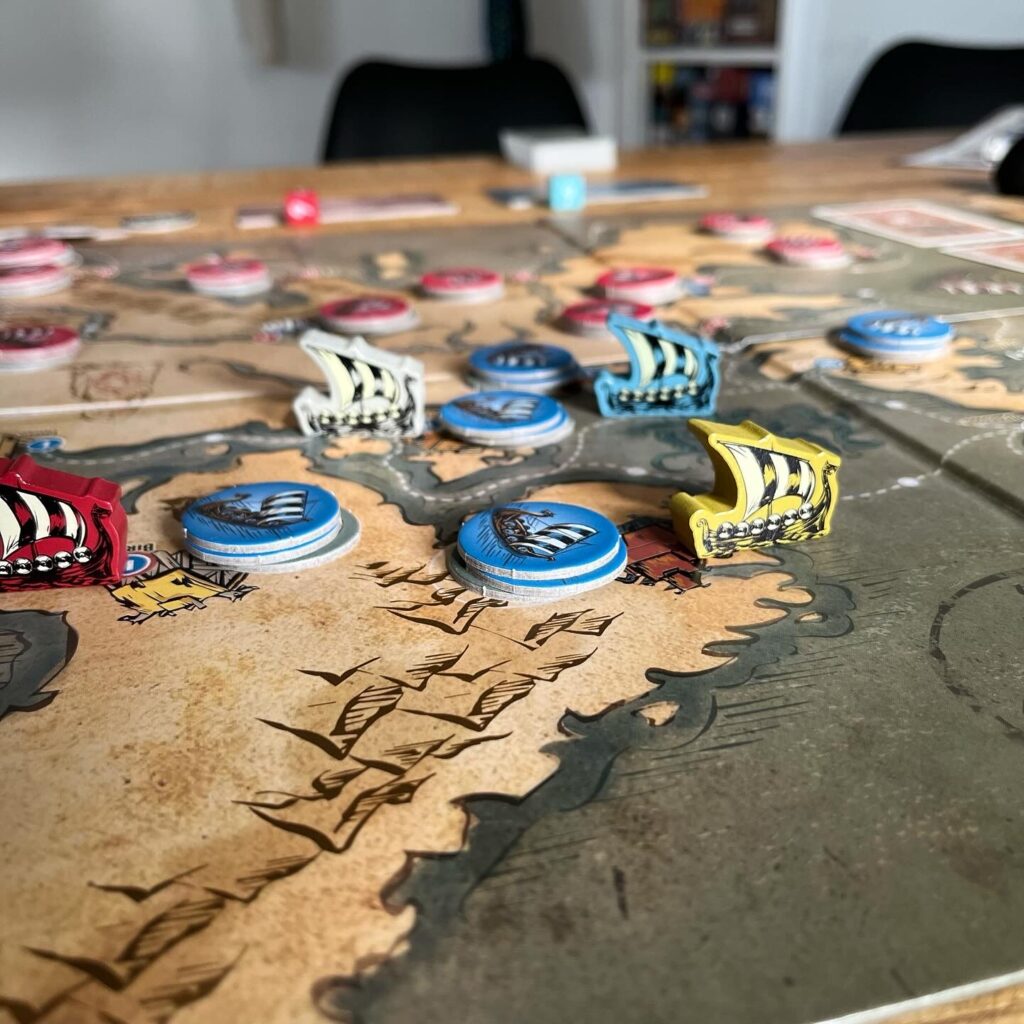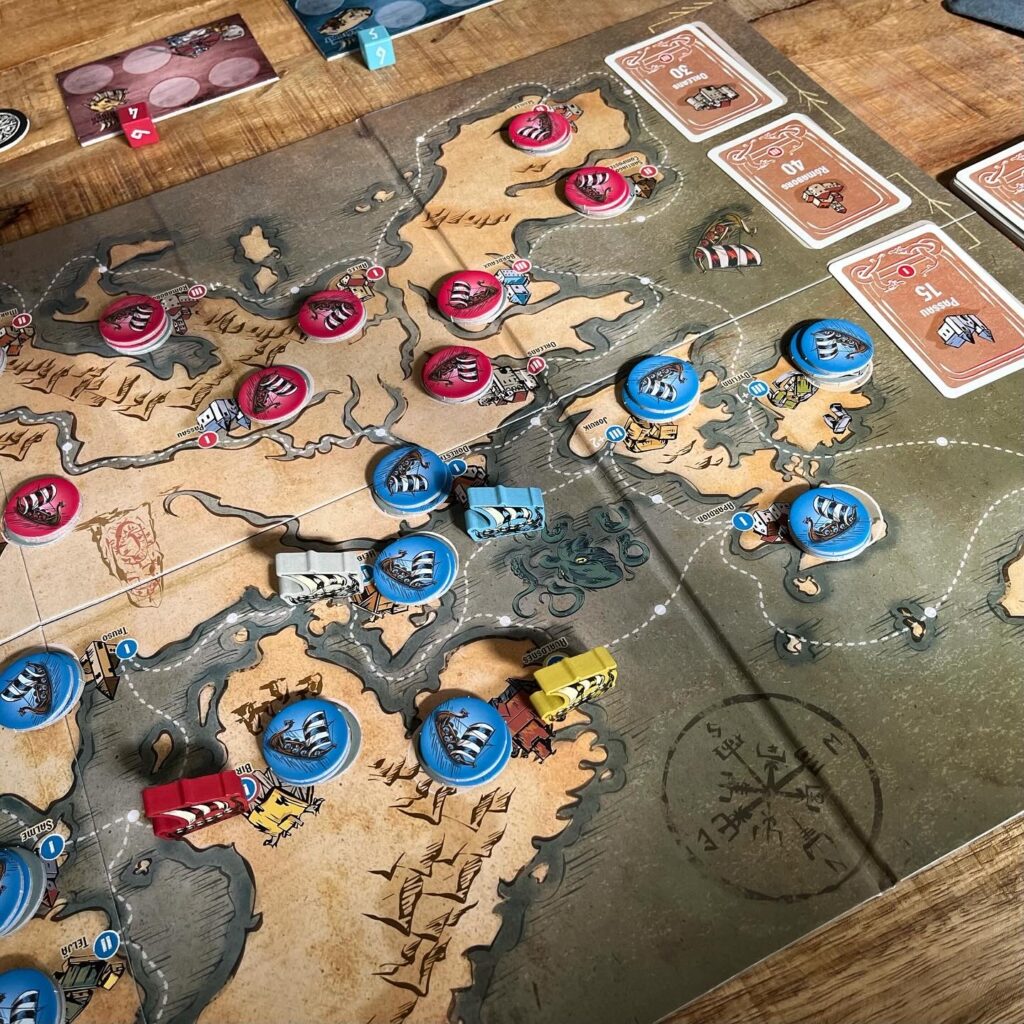The earth is round. Here, I said it. Discussion over. By the way, just because the earth is round does not prevent you from going to the edge. The Vikings proved that. These rugged rascals sought out the edge more than once, and so they did in Edge of the World.
Background
Edge of the World is part of the Viking’s Tales series by Finnish game maker Gamestorm Studio. Earlier in this series, King Tafl and Odin’s Table were also released. All three games share a theme and the same style of artwork inspired by Viking inspired woodblock art.

Goal and setup
In Edge of the World, players will sail around Europe calling at different ports to trade or better yet, plunder. Players try to accumulate gold and once a player has enough gold, the other players have another chance to reach that player’s home port and claim victory for themselves. This culminates in a final battle between two players. After players have gone to the edge, the winner of this final battle wins.
At the beginning of the game, players lay out the game board. A defense token is placed on each harbor site and a number of closed trade tiles. A stack of action cards is shuffled and depending on the number of players, a number of these are placed open next to the game board. There are two colors of ports (red for the southern ports and blue for the northern) and there are also two piles of port cards with cards corresponding to the ports. Three of each color are placed open on the game board to show the open harbors. During the game, several ports will open and close.



Each player receives a game board to keep trade tokens on, a boat that this player places in his starting port and a die to fight with.
Gameplay
The action cards are chosen by a simple draft by players and then players play their action cards. These cards contain a combat value and a movement value. The card can only be used for one of these values.
Players choose an action card and then may move the same number of steps on the board. Player may dock in an open port only if they also want to perform an action there. They can trade to get tokens or exchange goods for money or attack the port.
When attacking, players can deploy an action card for combat value, deploy hand tokens with combat value and they roll the die. Highest value wins. If a port loses, it is worth less for subsequent actions, but if the port wins, it is stronger next rounds. By the way, with plundering you can earn more, but you run more risk.


By trading and plundering, players earn money, and if a player has enough gold, a race against the clock ensues. The other players try to be the first to sail to the rich player’s home port. The final battle takes place between these two players in a similar fashion to a player-port battle. The winner of the battle wins Edge of the World.
Verdict
Edge of the World is a reflation simple board game that can be played just fine by families and novice players. The game concept and flow of play are clear and the objective is also clear, giving players a good idea of where to start and what actions they need to take. As with the other Viking’s Tales games, I am a big fan of the artwork.
The battles involve a certain amount of luck. While the final battle can produce exciting scenes, some players may be bummed if they are the first player with enough gold only to lose to another player because of a dice roll. This may feel somewhat random and frustrating, but oddly enough, this makes it somewhat similar to the games that were hugely popular in the 80s and 90s. Games where it was mostly about the experience at the table. Although the final battle can be random and frustrating, it might spark a story at the table and nostalgic memories.
For players who like to push the edge and are not averse to some luck.




